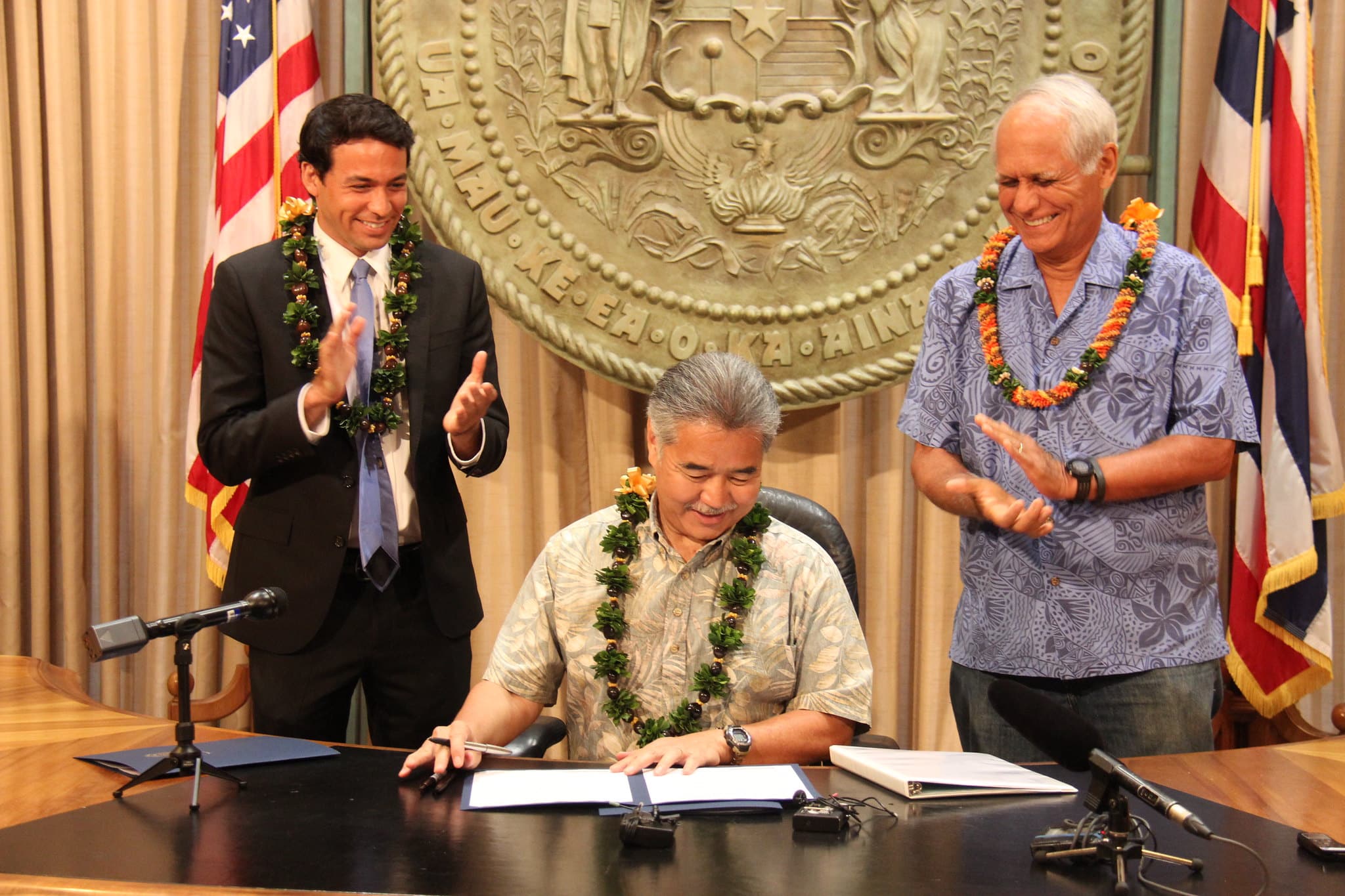The volcanic islands of Hawaii have been subject to the looming threat of rising sea levels. In 2015, the government set a target to achieve 100% electricity sales from renewable energy by 2045 in order to fight global warming. Since then, clean energy – solar energy in particular – has seen huge and continuous development. We examine some of the policies implemented by the government in terms of renewable energy in a bid to fight climate change in Hawaii.
—
Overview: Solar in Hawaii
Because of its geographical isolation, Hawaii heavily relies on imported petroleum and is the most petroleum-dependent state in the US. Thankfully, the state is making great strides in substituting it with clean energy, particularly solar power.
In 2020, the total amount of petroleum-fired generation declined to the lowest level in more than two decades, despite still accounting for 60% of Hawaii’s energy mix. In the same year, 30% of Hawaii’s electricity was supplied by renewables, with 17% coming from solar panels. As of the first quarter of 2022, the solar installations in Hawaii generated enough energy to power more than 368,000 homes.
The government invested a total of US$3.8 billion in solar power generation as of the first quarter of 2022 and further US$137.46 million in 2021, and it was projected that 728 megawatts can be further provided within the next 5 years. Honolulu, the capital of Hawaii, has the highest solar capacity per capita among all the other US cities in 2022, accounting for 1,134 watts per person.
Solar power as an alternative to fossil fuels can alleviate climate change significantly, as it does not generate any greenhouse gas emissions during generation itself, with studies showing that solar power has a considerably smaller carbon footprint than fossil fuels over its life cycle.
You might also like: Advantages and Disadvantages of Solar Energy
2045 Target: 100% Renewable Energy
The government’s commitment to put the brakes on its petroleum reliance in order to combat climate change in Hawaii is noticeable. Its legislature amended the state’s Renewable Portfolio Standard (RPS) in 2015, making Hawaii the very first state to set a legally binding deadline on achieving 100% of electricity sales from renewable energy by 2045.
The target was followed in 2018 by the passage of Act 15 in 2018, which requires Hawaii to become net carbon negative “as soon as practicable, but no later than 2045.” In 2020, the interim requirement of 30% renewable energy had been met, and the next energy efficiency standard will be to reduce electricity consumption by 40% by 2030.
Some tangible action has been taken to achieve this 100% renewable energy goal and mitigate the impacts of climate change, including the three Hawaii solar projects, Hawaii Clean Energy Initiative (HCEI), and the Powering Past Coal Task Force (PPCTF).

Picture 1: Governor Ige signed bill setting 100% renewable energy goal in power sector
Three Hawaii Solar Projects
Three grid-scale solar power projects at Kawailoa, Waipio and Mililani on the island of Oahu were proposed in 2018, which contribute significantly to the 2045 goal of clean energy. All three projects were completed in 2019, generating a total of 110 megawatts each year that can be used by about 11% of Oahu households. The project is also the largest block of grid-scale solar power ever installed in Hawaii.
“Hawaii is on the front lines of the fight against climate change, and the shift to renewable energy is one of our best weapons,” said Hawaii Gov. David Ige.
“Building solar energy at this scale represents tremendous progress toward our renewable energy goals. I thank all the partners involved for making it happen.”
Kawailoa Solar is not only the largest among these three solar projects, but also the largest in Hawaii, holding a contracted capacity of 49 megawatts and supplying energy to 14,300 households. Waipio Solar has a slightly lower contracted capacity, reaching 45.9 megawatts and powering 13,400 households. The last project, Mililani Solar II, led to the construction of 150,000 solar panels which hold a capacity of 14.7 megawatts.
Hawaii Clean Energy Initiative (HCEI)
Hawaii Clean Energy Initiative (HCEI) is a framework of statutes and regulations supported by a diverse group of stakeholders committed to Hawaii’s clean energy future. Launched in 2008, HCEI has a primary goal of meeting 70% of Hawaii’s energy needs through renewables by 2030.
HCEI is propelled by the help of more than 100 community members and national experts who formed working groups dedicated to achieving the primary target. Partnerships with public and private sectors such as Drive Electric Hawaii, Hawaii-Okinawa Memorandum of Cooperation, Hawaii Advanced Visualization Environment Nexus are also instrumental in promoting clean energy through HCEI.
Besides collaboration, significant progress is also made through policy action in HCEI. In 2016, Act 202 was enacted, establishing a renewable fuels production tax credit which grants sellers an income tax reduction for the renewable energy sold. In 2017, Act 32, an act relating to climate change which helps align Hawaii with Paris Agreement goals, was further enacted.
In 2018, ten years after its launch, HCEI has seen considerable achievement. 60 utility-scale renewable energy projects were installed in total, while energy performance contracts for a total value of US$507 million were signed. 5,100 people were employed in energy efficiency, with 4,900 worked in the solar industry.
Powering Past Coal Task Force (PPCTF)
Several renewable power projects that are intended to substitute the electricity from the coal plant, particularly those in fall 2022 and summer 2023, have been delayed because of global supply chain headwinds and pricing pressures.
Established in March 2021 by Governor David Ige, Powering Past Coal Task Force (PPCTF) aims to track and coordinate the progress of these behind-schedule projects and measures. Stakeholders will actively engage in project permitting and site development to help avoid further delays of crucial projects and programs. Coming from diverse backgrounds, participants of PPCTF include the Public Utilities Commission, the Department of Land and Natural Resources, Hawaiian Electric, Hawaii Energy, and Earthjustice.
Conclusion
As seen from its vision of combating climate change in Hawaii, the state will continue its effort in developing renewable energy with conspicuous results. In fact, Hawaii’s last-ever coal shipment arrived in Oahu in July 2022, bound for the last remaining coal-fired power plant, which will be shut down in September. The transition from fossil fuel to renewable energy is remarkable. With substantial help from the government as well as both the public and private sectors, Hawaii is on track to reach its 2045 goal of 100% renewable energy, setting a successful precedent for not only the other states in the US, but many other cities around the world.
You might also like: All You Need to Know About The US Inflation Reduction Act


















